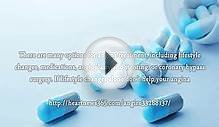
Equipment used to take blood pressure
| Area of Science: Biological Sciences
Meant for at least Grade 7-9 (age 11-13). This experiment is inedible. An adult should be present. |
Overview:
Take a blood pressure.. correlate the blood pressure to the heart's pumping of blood.
Equipment:
1. Sphygmomanometer (blood pressure cuff).. avail from the school nurse?? A "child's cuff" should be used to allow more accurate readings for children.
2. Stethoscope.
It would be helpful if someone who knows how to take a blood pressure is present to supervise, as the technique requires some practice. Also you want to avoid keeping the cuff inflated on someone's arm for too long.
Safety:
Don't put the cuff around your friend's neck.. :).
How to do the experiment:
1. Deflate the bladder of the cuff and place it around the upper arm so it fits snugly, but not too tightly. If you're right handed, you should hold the bulb/pump in your left hand to inflate the cuff. Hold it in the palm so your fingers can easily reach the valve at the top to open/close the outlet to the air bladder wrapped around the person's arm.
2. Put the head of the stethoscope just under the edge of the cuff, a little above the crease of the person's elbow. Hold it there firmly with the thumb, or with a few fingers of your right hand. Put the ear pieces of the stethoscope in your ears.
3. Inflate the cuff with brisk squeezes of the bulb. Watch the pressure gage as you do it. For most kids, you shouldn't need to go over 150 (the markings indicate "pressure" in mm Hg or mercury).
4. At 150, slightly open the valve on the air pump (held in your left hand, as above). This part takes practice.. It's important that you don't let the air out too suddenly. Likewise, your friend will be quite irritated with you if you let it out too slowly.
5. Now, pay attention *very carefully* to what you hear through the stethoscope as the needle on the pressure gage falls. You will be listening for a slight "blrrpp" or a something that sounds like "prrpshh." The first time you hear this sound, note what the reading was on the pressure gage. This value represents the systolic blood pressure (described below).
6. The sounds should continue and become louder in intensity. Note the pressure reading when you hear the sound for the last time. This value represents the diastolic blood pressure.
7. Afterwards, open the air valve completely to release any remaining pressure.
In adults, hypertension is defined as regular BP readings > 140/90. However, kids should have BP lower than the normal values for adults.
Explanation:
BACKGROUND
Blood pressure varies relative to heart's pumping of blood. The heart should be thought of as a dual pump, with a right and left side. Systole represents the active pumping of blood from the ventricles into the circulation. The right side of the heart takes venous/returning blood from the body and sends it to the lungs to be oxygenated (pulmonary circulation). Measuring blood pressures on the right side of the heart requires very complicated equipment. The left side of the heart takes the oxygenated blood and sends it to the rest of the body. When you take a blood pressure reading, you measure pressures in the systemic circulation.
The highest pressures occur during systole as blood is ejected into the aorta and subsequent arteries of the body. Diastole, the heart's resting phase, follows systole. During diastole the ventricles fill with more blood. Systemic pressures fall until more blood is ejected during systole.
THE EFFECT
The blood pressure cuff lets you apply external pressure to a circumferential ring around the upper arm. When the pressure is great enough, it forcibly closes the main artery of the upper arm - the brachial artery. The stethoscope allows you to hear when the underlying artery opens and closes as you release the air in the bladder.
Example - Take a person with a blood pressure of 120/80. The first number always represents systolic pressure (120), and the second number diastolic pressure (80). When you apply a pressure of 180mm Hg to the arm, the 120mm of pressure from the artery cannot overcome your externally applied pressure; the artery stays shut.
As you release the air out of the cuff, the external pressure falls. At 150mm the artery is still closed.. but at 119mm, it can open for just the slightest instant as the maximum/systolic pressure exceeds the applied pressure. Once the arterial pressure falls below 119mm, however, the artery shuts again. This opening and shutting produces the sounds you hear through the stethoscope (Korotkoff sounds). When the applied pressure falls below the diastolic/resting pressure, the artery stays open all the time.
RELATED VIDEO



Share this Post
Related posts
Picture of Blood pressure cuff
Verify that you have the right cuff size. A standard size blood pressure cuff purchased from a drugstore will fit around…
Read MoreIPhone Blood pressure cuff
Medical devices tend to look weird and intimidating. While that might be useful for film directors like David Cronenberg…
Read More











